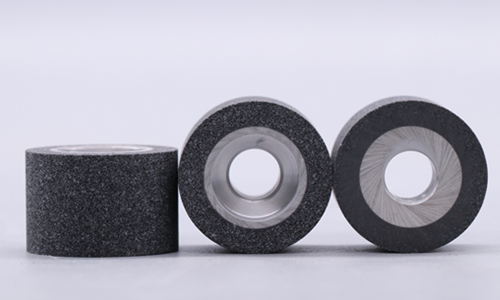Case of vitrified CBN grinding wheel for die steel

H13, SKD61, DC53 and M2 high-speed steel are some valuable die steels. They have high toughness and wear resistance and perform well in the corresponding application fields. The specific analysis is as follows:
1. H13 die steel
Characteristics and application:
H13 is a hot working die steel with good toughness and wear resistance. Its main components include C, Si, Cr, Mo and V. After reasonable heat treatment, it can obtain excellent mechanical properties and wear resistance, so it is widely used in the manufacture of high-performance molds.
2. DC53 die steel
Characteristics and application:
DC53 is a cold working die steel that has undergone special heat treatment and has good toughness and wear resistance. It is mainly used to manufacture high-performance stamping dies and plastic molds.
3. M2 high-speed tool steel
Characteristics and applications:
M2 is a high-speed steel with good toughness and wear resistance. It is mainly used to manufacture high-performance tools such as knives and drills.
4. Cr12MoV mold steel
Characteristics and applications:
Cr12MoV is a cold-working die steel with high hardness and high toughness, suitable for precision stamping dies and thread rolling dies, etc.
Mold steel is widely used in mold manufacturing due to its high hardness, high strength and wear resistance. However, these characteristics also make it difficult to process, especially in scenarios with high precision requirements, which puts higher requirements on the performance of processing tools. Ceramic bond CBN (cubic boron nitride) grinding wheels have been widely used in mold steel processing due to their superior grinding performance. The following is a real case showing its application effect in mold steel mold processing.
Due to the high hardness and toughness of H13 mold steel, traditional grinding wheels are difficult to meet the requirements of high-efficiency and high-precision processing, so it was decided to use ceramic bond CBN grinding wheels for grinding.
Case background
A mold manufacturing company needs to process a set of hot work die steel (H13 material) molds for aluminum alloy die casting production. The core components of the mold require:
| Hardness | HRC 58-62 |
| Surface roughness | Ra ≤ 0.2μm |
| Dimension accuracy | ±0.01mm |
| Efficiency | Meet mass production needs |
Solution
1. Grinding tool selection
Grinding wheel type: Vitrified bond CBN grinding wheel;
Grit selection: 180# for rough grinding and 400# for fine grinding;
Grinding wheel shape: Flat grinding wheel (1A1 type), adapted to the structural characteristics of the mold;
Binder characteristics: Vitrified bond has good porosity and grinding self-sharpening, suitable for the processing of high-hardness materials.
2. Processing equipment and parameters
Use high-precision CNC grinders and the following parameters for grinding:
Spindle speed: 1800-2400 RPM;
Grinding depth: 0.03mm per feed in the rough grinding stage, and controlled within 0.005mm in the fine grinding stage;
Cutting fluid: Water-based coolant to ensure temperature control in the processing area and reduce thermal stress.
3. Processing process
Rough grinding stage: Quickly remove material to form the basic shape of the mold;
Fine grinding stage: Further process the mold surface to reach the designed size;
Polishing grinding: Use high-grained CBN grinding wheels for surface polishing to improve the surface quality of the mold.
Processing effect
Processing accuracy
The size error of the mold after processing is controlled within ±0.008mm, meeting the design requirements.
Surface quality
The surface roughness of the mold reaches Ra 0.15μm, which is better than the expected target, greatly improving the service life and production efficiency of the mold.
Processing efficiency
After using the ceramic CBN grinding wheel, the processing efficiency is improved by about 30%, and the processing time of a single mold is shortened from 12 hours to 8 hours.
Grinding wheel durability
The vitrified bond CBN grinding wheel performs well in processing H13 mold steel. After a single dressing, 50 molds can be processed continuously, and the tool life is significantly improved.
Technical difficulties and countermeasures
Difficulty: High hardness and high toughness of mold steel
Traditional grinding wheels are easy to wear, resulting in low processing efficiency and difficult to ensure dimensional accuracy.
Countermeasures: Vitrified CBN grinding wheels have extremely high hardness and wear resistance, which are suitable for efficient processing of high-hardness steel.
Difficulty: Thermal stress causes mold deformation
Grinding heat can easily cause thermal cracks or deformation on the mold surface, affecting the processing quality.
Countermeasures: Use water-based coolant and optimize the porosity of the grinding wheel to enhance the cooling effect and reduce the temperature of the processing area.
Difficulty: Balance between surface quality and efficiency
While pursuing high surface finish, ensuring production efficiency is a major challenge.
Countermeasures: By reasonably selecting the grinding wheel grit and processing parameters, flexibly switch between rough grinding and fine grinding, and take into account both efficiency and quality.
Summary
This case demonstrates the superior performance of vitrified CBN grinding wheels in H13 mold steel processing:
High precision: processing dimensions and surface quality meet design requirements;
High efficiency: significantly shorten processing time and improve production rhythm;
Long life:The grinding wheel has strong durability and reduces production costs;
High stability: The grinding process is stable without cracks or dimensional loss of control.
With its excellent self-sharpening, wear resistance and thermal stability, ceramic bonded CBN grinding wheels provide mold manufacturing companies with efficient and reliable processing tools, and are the best choice for processing high-hardness mold steel. In the future, with the continuous advancement of processing technology, CBN grinding wheels will play a greater role in more difficult processing scenarios.
—EDITOR: Doris Hu, Shangfeng Niu
—POST: Doris Hu

